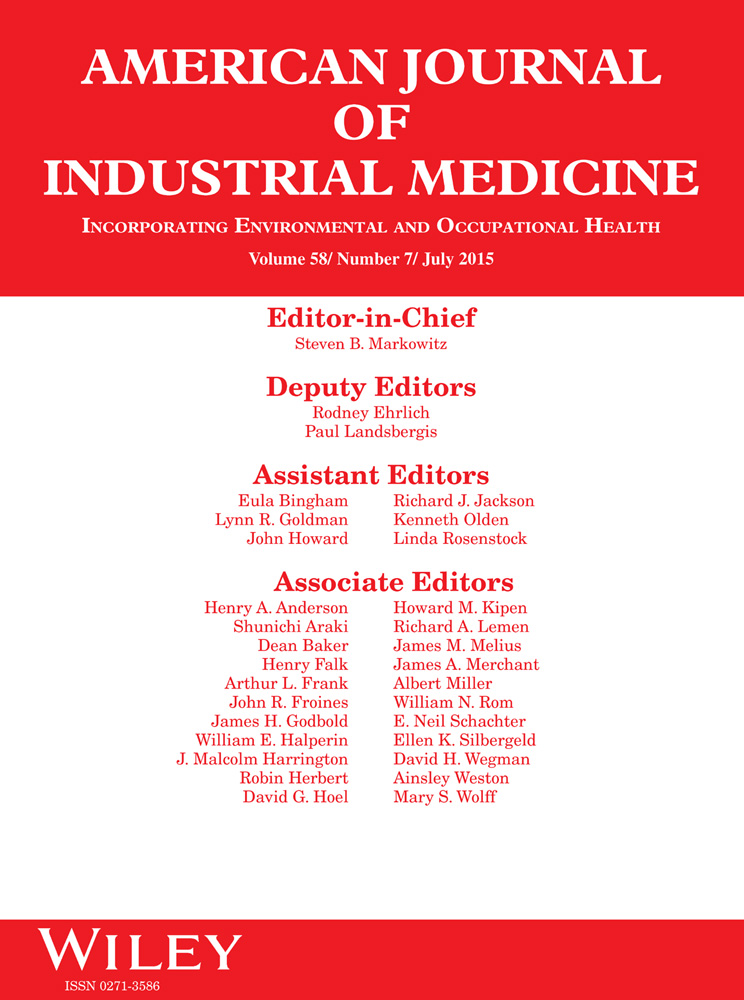Risk of cancer among firefighters in California, 1988–2007
Correspondence to: Rebecca J. Tsai, PhD, National Institute for Occupational Safety and Health, 1090 Tusculum Avenue, R-17, Cincinnati, OH 45226. E-mail: [email protected]
Abstract
Background
Most studies of firefighter cancer risks were conducted prior to 1990 and do not reflect risk from advances in building materials.
Methods
A case–control study using California Cancer Registry data (1988–2007) was conducted to evaluate the risk of cancer among firefighters, stratified by race.
Results
This study identified 3,996 male firefighters with cancer. Firefighters were found to have a significantly elevated risk for melanoma (odds ratio [OR] = 1.8; 95% confidence interval [CI] 1.4–2.1), multiple myeloma (OR 1.4; 95%CI 1.0–1.8), acute myeloid leukemia (OR 1.4; 95%CI 1.0–2.0), and cancers of the esophagus (OR 1.6; 95%CI 1.2–2.1), prostate (OR 1.5; 95%CI 1.3–1.7), brain (OR 1.5; 95%CI 1.2–2.0), and kidney (OR 1.3; 95%CI 1.0–1.6).
Conclusions
In addition to observing cancer findings consistent with previous research, this study generated novel findings for firefighters with race/ethnicity other than white. It provides additional evidence to support the association between firefighting and several specific cancers. Am. J. Ind. Med. 58:715–729, 2015. © 2015 This article has been contributed to by US Government employees and their work is in the public domain in the USA.




